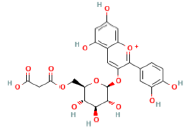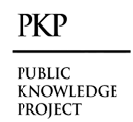Characterization and Evaluation of Anti-Diabetic, Anti-Inflammatory Activity, in Experimental Animals and Screening of Brassica rapa Components
DOI:
https://doi.org/10.55640/ccme.v2i11.195Keywords:
Anti-Diabetic, Anti-Inflammatory, Experimental animals, Brassica rapaAbstract
Volatiles are good leading pointers towards their antecedents and hence the quality of the item can be established. Low levels of aroma volatile synthesis in immature stages of the plant are suggestive of low precursor levels prevailing which are gradually controlled until the correct harvest time. A substantial number of the primary and secondary metabolites extracted from the leaves of Brassica rapa are fundamental in the improved human nutrition. Powder of Brassica rapa leaves was prepared from shade dried and pulverised leaves of different plantlets. One hundred grams of the powder was placed in soxhlet device ready for continuous hot percolation for approximately 8 hours using methanol with a volume of 350ml as a solvent. This was done under vacuum first to a semi-solid paste and then, dried further in desiccator to remove the residual solvent contents. The main phytochemicals identified in leaves were 3-tert-Butylphenylisothiocyanate, C11H13NS, Sinapinic acid-O-glucuronide isomer, C17H20O11, Pentenyl-1,3-dioxan-5-ol, C9H16O3, 9-Octadecenamide, C18H35NO, Cyanidin 3-O-(6-O-malonyl-beta-D-glucoside, C24H23O14, 5-Methylhex-5-enenitrile, C7H11N, 1-Phenylethyl isothiocyanate, C9H9NS, 4-methylsulfinylbutyl glucosinolate, C12H23NO10S3, 5-Methylhex-5-enenitrile, C7H11N, Cyanidin 3-O-(6-O-malonyl-beta-D-glucoside, C24H23O14+, 1-Phenylethyl isothiocyanate, C9H9NS, n-Hexadecane, C16H34, Glucoraphanin, C12H23NO10S3, Phytol, C20H40O, and 3,3'-Diindolylmethane, C17H14N2. Impact of oral administration of Brassica rapa fractions on serum enzymes in rats: To ascertain the effect of oral administration of Brassica rapa extract on the serum enzymes SGPT, SGOT, and ALP, laboratory rats were used in in vitro experimental testing. Recorded 79.15± 1.66, 95.17± 2.90 and 35.92±0.87 respectively for Brassica rapa methanol extract, while 139.00±5.50, 154.81±6.20 and 41.93±1.05 were recorded respectively for using Di-(2- ethylhexyl) phthalate and 52.97± 1.20, 70.00± 1.62 and 19.00±0.03 were recorded to Control (vehicle) (0.5 ml/kg Corn oil). According to the type of extract (Methanolic rude extract, Hexane fraction, Ethanol fraction, Water fraction and acarbose (Standard) recorded (93.02 ± 0.65, 38.01 ± 0.37, 55.91 ± 0.29, 69.88 ± 0.47 and 14.11 ± 0.05) respectively inhibitory potency against α-amylase. While recorded (67.44 ± 0.43, 46.07 ± 0.30, 35.02 ± 0.27, 27.00 ± 0.21, and 11.96 ± 0.06) respectively inhibitory potency against α- glucosidase activity.Brassica extract's diverse patterns of bioactive chemicals make it a potential natural anti-diabetic and source for a number of other medical uses. We assessed Brassica rapa leaves' anti-inflammatory, anti-diabetic, and nutritional qualities. The study further reveals that this plant’s leaves contain ascorbic acid, phenolic compounds, carotenoids and flavonoids which are all beneficial to health. It should be noted that this plant's leaves provide unique phenolic compounds. When biological activities are taken into account, this could be quite relevant and merits more research. These plant components' unique chemical makeup greatly influences their anti-inflammatory qualities. Therefore, the food and pharmaceutical companies may consider the commercialisation of standardised aqueous extracts of leaves for use as antidiabetic.
Downloads
References
Park SK, Ha JS, Kim JM, Kang JY, Lee du S, Guo TJ, et al. Antiamnesic Effect of Broccoli (Brassica oleracea var. italica) Leaves on Amyloid Beta (Abeta)1-42-Induced Learning and Memory Impairment. J Agric Food Chem. 2016;64(17):3353-61
Vinha AF, Alves RC, Barreira SV, Costa AS, Oliveira MB. Impact of boiling on phytochemicals and antioxidant activity of green vegetables consumed in the Mediterranean diet. Food Funct. 2015;6(4):1157-63.
Yang Y, Zhang X. In vitro antitumor activity of broccolini seeds extracts. Scanning. 2011;33(6):402-4.
Vinodh K, Natarajan A, Devi K, Senthilkumar B. Chemical composition of aqueous leaf extract of MurrayaKoenigii. Int J Pharm Biol Archiv. 2013;4:493-7.
Gani A. Chemical constituents and uses, medicinal plants of Bangladesh. Asiat Soc Bangladesh. 2003;434
Fernie AR, Trethewey RN, Krotzky AJ, Willmitzer L. Metabolite profiling: from diagnostics to systems biology. Nat Rev Mol Cell Biol. 2004;5(9):763-9.
Kinnula VL, Crapo JD. Superoxide dismutases in malignant cells and human tumors. Free Radic Biol Med. 2004;36(6):718-44.
Sas K, Robotka H, Toldi J, Vecsei L. Mitochondria metabolic disturbances, oxidative stress and the kynurenin system, with focus on neurodegenerative disorders. J Neurol Sci. 2007;257(1-2):221-39.
Singh U, Jialal I. Oxidative stress an atherosclerosis. Pathophysiology. 2006;13(3):129-42.
Arteel GE. Oxidants and antioxidants in alcohol- induced liver disease. Gastroenterology. 2003;124(3):778-90.
Bolton JL, Trush MA, Penning TM, Dryhurst G Monks TJ. Role of quinones in toxicology. Chem Res Toxicol. 2000;13(3):135-60.
Guidi I, Galimberti D, Lonati S, Novembrino C Bamonti F, Tiriticco M, et al. Oxidative imbalance in patients with mild cognitive impairment and Alzheimer's disease. Neurobiol Aging. 2006;27(2):262-9.
Hyun DH, Hernandez JO, Mattson MP, de Cabo R. The plasma membrane redox system in aging. Ageing Res Rev. 2006;5(2):209-20.
Al-Baoqai, N. Al- mahbashi, H.; Al-Adhal, A. Antidiabetic and an-[19] tihyperlipidemic activity of dracaena cinnabaribalf resin ethanolic extract of soqatra island in experimental animals. Univ. J. Pharm. Res., 2018, 3(5), 1-11.
Martysiak-Żurowska D, Wenta W. A comparison o ABTS and DPPH methods for assessing the total antioxidant capacity of human milk. Acta Sci Pol Technol Aliment. 2012;11(1):83-9.
Ramakrishna BS, Varghese R, Jayakumar S, Mathan M, Balasubramanian KA. Circulating antioxidants in ulcerative colitis and their relationship to disease severity and activity. J Gastroenterol Hepatol. 1997;12(7):490-4.
Taveira, Evolution of Brassica rapa var. rapa L. volatile composition by HS-SPME and GC/IT-MS, Microchem. J., № 93, с. 140
Takuno, Phylogenetic relationships among cultivated types of Brassicarapa L. em. Metzg. as revealed by AFLP analysis, Genet. Resour. Crop. Evol., № 54, с. 279
Sala, Anti-inflammatory and antioxidant properties of Helichrysum italicum, J. Pharm. Pharmacol., № 54, с. 365
Cartea, Phenolic compounds in brassica vegetables, Molecules, № 16, с. 251
Wittkop, Status and perspectives of breeding for enhanced yield and quality of oilseed crops for Europe, Euphytica, № 170, с. 131
Valavala, Effect of mustard (Brassica juncea) leaf extract on streptozotocin-induced diabetic cataract in Wistarrats, J. Food Biochem., № 35, с. 109
Kumar, Quality characteristics in rapeseed - mustard and role of some anti-nutritional factors in plant defense: future strategies, J. Oilseed Brassica, № 5, с. 87
Hill, Variation in glucosinolates in oriental Brassica vegetables, J. Am. Soc. Hortic. Sci., № 112, с. 309
Rangkadilok, Developmental changes of sinigrin and glucoraphanin in three Brassica species (Brassica nigra, Brassica juncea and Brassica oleracavar. italica), Sci. Hortic., № 96, с. 11
Gil, Benzylglucosinolate degradation in Lepidium sativum: effect of plant age and time of autolysis, Phytochemistry, № 19, с. 1365
Kessler, Plant responses to insect herbivory; the emerging molecular analysis, Annu. Rev. Plant Biol., № 53, с. 299
Kesen, GC-MS-olfactometric characterization of the key aroma compounds in Turkish olive oils by application of the aroma extract dilution analysis, Food Res. Int., № 54, с. 1987
Sales-Campos, An overview of the modulatory effects of oleic acid in health and disease, Mini-Rev. Med. Chem., № 13, с. 201
Win, Oleic acid – the anti-breast cancer component in olive oil, AU J. Tech., № 9, с. 75
Mahadkar, Gas chromatoghraphy mass spectroscopic (GCMS) analysis of some bioactive compounds from five medicinaly relevant wild edible plants, Asian J. Pharm. Clin. Res., № 6, с. 136
Manonmani, GC–MS analysis of bioactive components of an important medicinal fern Actiniopteris radiate (Swartz) link, World J. Pharm. Res., № 4, с. 1860
Rimm EB, Ascherio A, Giovannucci E, Spiegelman D, Stampfer MJ, Willett WC. Vegetable, fruit, and cereal fiber intake and risk of coronary heart disease among men. JAMA. 1996;275(6):447-51.
Vanithadevi, B.; Anuradha, C.V. Effect of rosmarinic acid on insulin sensitivity, glyoxalase system and oxidative events in liver of fructose-fed mice. Int. J. Diabetes Metab., 2008, 16, 35-44.
Sepici-Dincel, A.; Açikgöz, S.; Çevik, C.; Sengelen, M.; Yeşilada, E. Effects of in vivo antioxidant enzyme activities of myrtle oil in normoglycaemic and alloxan diabetic rabbits. J. Ethnopharmacol., 2007, 110(3), 498-503.
Pahwa, R.; Goyal, A.; Bansal, P.; Jialal, I. Chronic Inflammation. In StatPearls; StatPearls Publishing: Treasure Island, FL, USA, 2018.
Cash, J.L.; White, G.E.; Greaves, D.R. Chapter 17—Zymosan-Induced Peritonitis as a Simple Experimental System for the Study of Inflammation. Methods Enzymol. 2009, 461, 379–396.

Downloads
Published
How to Cite
Issue
Section
License

This work is licensed under a Creative Commons Attribution 4.0 International License.
Current Clinical and Medical Education













